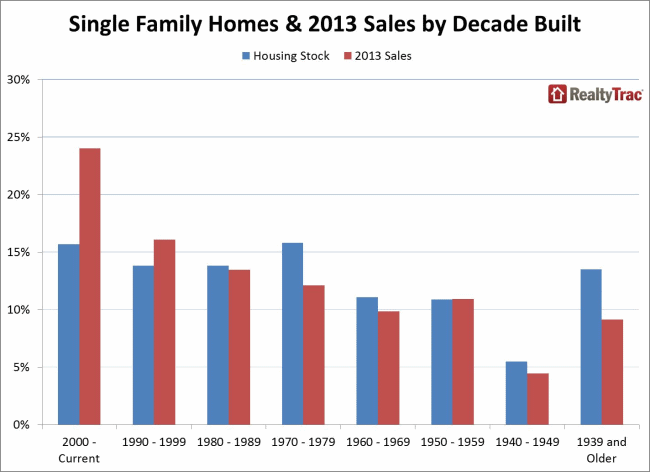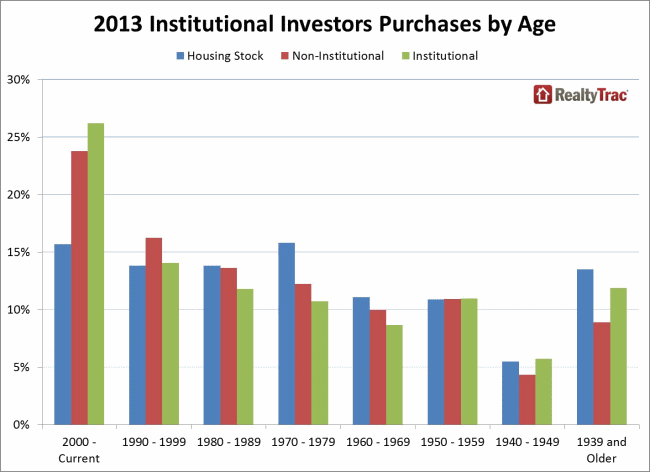America's housing inventory is aging and that perhaps could present an opportunity for bargain-hunting homeowners. RealtyTrac's Aging Homes Analysis shows that more than 70 percent of the housing stock in the U.S. was built prior to 1990 and that these older homes constituted 60 percent of the homes sold so far in 2013.

"The high percentage of homes that are at least 20 years old and likely in need of some major repairs is eye-opening," said Jake Adger, chief economist at RealtyTrac. "However, given the low inventory of homes available for sale in today's market, this challenge of aging U.S. housing supply can also be an opportunity for buyers looking for a bargain and homeowners looking to update their living space and improve the value of their homes."
The average price at which these 23-year-old plus homes sold, while lower than those more recently constructed, was not dramatically so. Homes built prior to 1990 sold this year for an average price of $233,211 while newer homes had an average sale price of $256,292.
Prospective owner-occupants, however may face less competition in purchasing older homes. Institutional investors, which RealtyTrac defines as those who have bought 10 or more properties in the last 12 months, are more likely to purchase newer homes. These investors bought 39 percent of post-1990 homes sold this year and in 10 states those investors purchased at least half of such properties. Institutional investors accounted for 73 percent of newer home sales in Nevada, 66 percent in Idaho, 61 percent in both Arizona and Mississippi and 60 percent in North Carolina.

"The lower price point on older homes is not surprising given many are in need of some rehab and are more likely to have maintenance issues," Adger noted. "But this also presents an opportunity for buyers willing to take on that older inventory. Those buyers can purchase at lower price points and face less competition from institutional investors."
Sales of older homes vary by state. In 14 states homes constructed prior to 1990 made up more than 80 percent of sales. Those states, with the exception of Louisiana, New Mexico, and Kentucky are all clustered in the northeast. In contrast, older homes made up less than 40 percent of sales in Utah and Nevada.
While lower prices and lesser competition are advantages, RealtyTrac says that older homes are more likely to either need major work or upgrades for energy efficiency or disaster preparedness. Others lack floor plans or amenities homebuyers expect today.
Adger pointed to the Federal Housing Administration's 203(k) program as a vehicle that can help homebuyers take advantage of buying an older home. Available only to owner-occupants, the program can be used to finance the purchase, rehabilitation, or upgrade of an older home and permits homeowners to roll rehabilitation costs into a refinance.
Longtime homeowners who live in older homes can use the 203(k) program to refinance at a lower rate. Eight states have more than 100,000 homeowners who are estimated to be up to 10 percent underwater on their mortgages, Adger noted. With modest increases in home values these homeowners should be able to refinance. These homeowners may not be aware that they can refinance with a 203(k) loan even if their home needs major upgrades, as long as they have 5 percent equity and are not in default.







